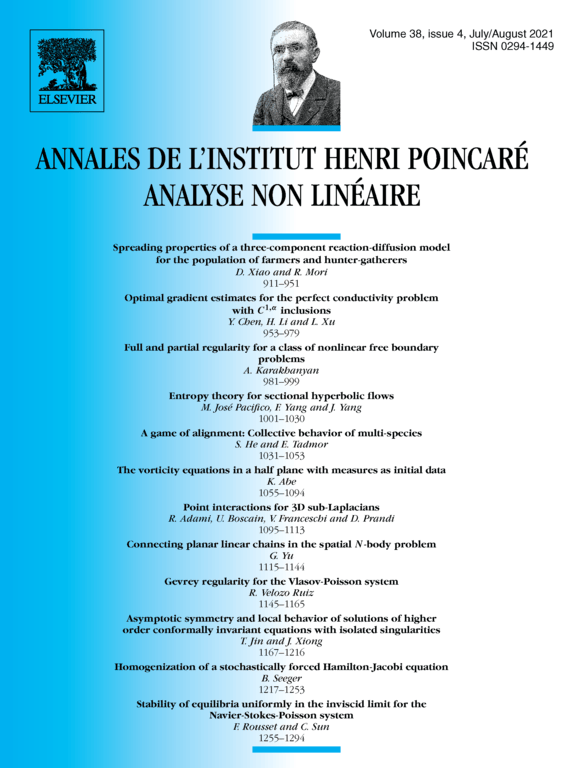Spreading properties of a three-component reaction-diffusion model for the population of farmers and hunter-gatherers
Dongyuan Xiao
Ryunosuke Mori

Abstract
In this paper, we investigate the spreading properties of solutions of farmer and hunter-gatherer model which is a three-component reaction-diffusion system. Ecologically, the model describes the geographical spreading of an initially localized population of farmers into a region occupied by hunter-gatherers. This model was proposed by Aoki, Shida and Shigesada in 1996. By numerical simulations and some formal linearization arguments, they concluded that there are four different types of spreading behaviors depending on the parameter values. Despite such intriguing observations, no mathematically rigorous studies have been made to justify their claims. The main difficulty comes from the fact that the comparison principle does not hold for the entire system. In this paper, we give theoretical justification to all of the four types of spreading behaviors observed by Aoki et al. Furthermore, we show that a logarithmic phase drift of the front position occurs as in the scalar KPP equation. We also investigate the case where the motility of the hunter-gatherers is larger than that of the farmers, which is not discussed in the paper of Aoki et al.
Cite this article
Dongyuan Xiao, Ryunosuke Mori, Spreading properties of a three-component reaction-diffusion model for the population of farmers and hunter-gatherers. Ann. Inst. H. Poincaré Anal. Non Linéaire 38 (2021), no. 4, pp. 911–951
DOI 10.1016/J.ANIHPC.2020.09.007